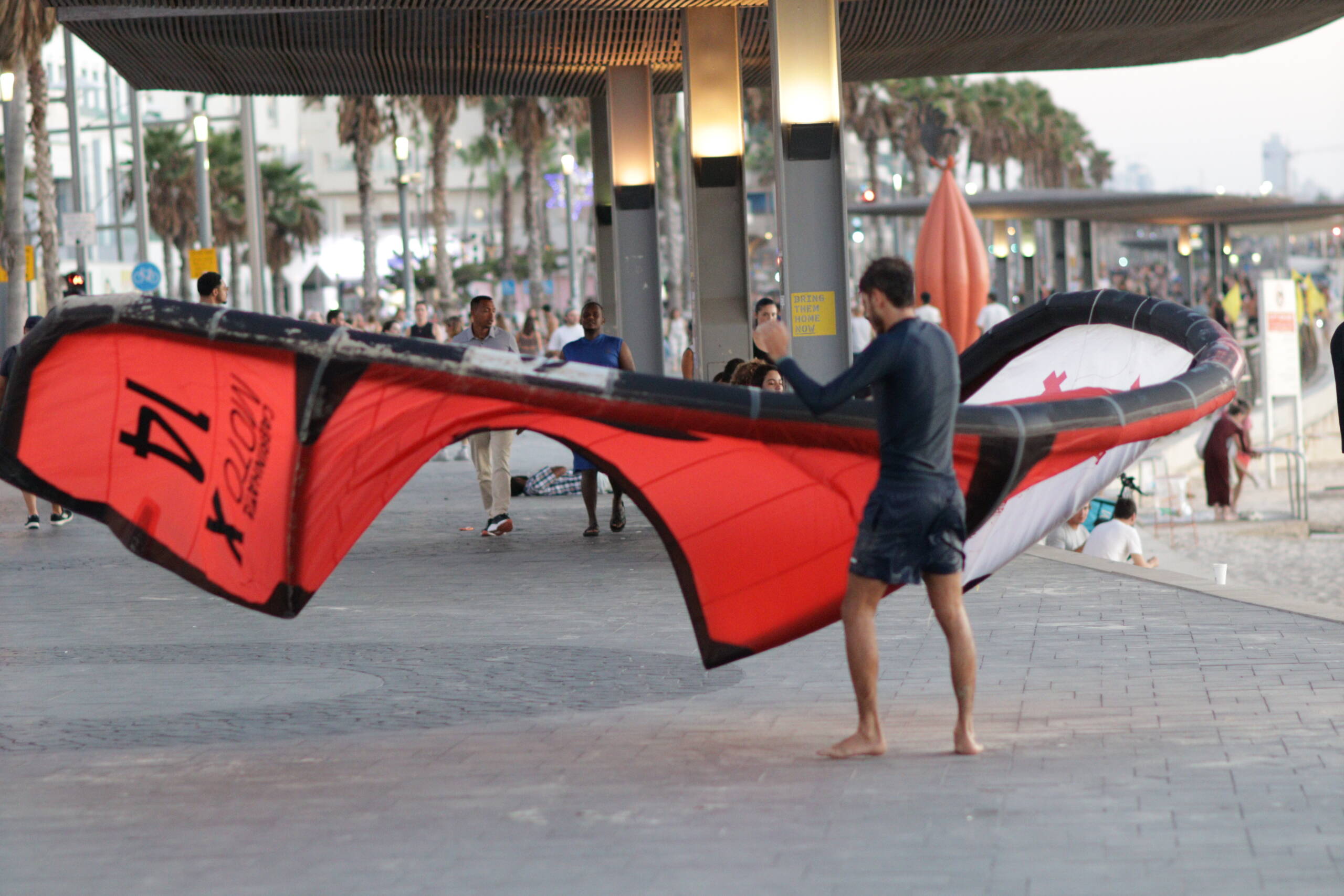Kitesurfing is never just about riding the waves—it begins long before your board touches the water. The photograph shows one of those essential behind-the-scenes rituals: the taming of the kite. A bright red canopy, wide enough to catch the attention of every passerby, billows and twists as its rider works carefully to fold it down after a session. It’s a moment that feels both chaotic and beautiful. The kite strains like a wild animal against the wind, eager to return to the sea, while the surfer must coax it into submission, step by patient step.

Anyone who has ever tried kitesurfing knows this dance well. Setting up, launching, landing, and finally packing away—it’s part of the rhythm, almost as important as the ride itself. Handling the kite on land requires as much focus as maneuvering it on the water. A gust of wind at the wrong moment can send it thrashing unpredictably, demanding quick reflexes and calm control. There’s an artistry to it, a respect between human and element, where every motion counts.
What’s striking about these moments is how they reveal the dual nature of kitesurfing. On the water, it’s all speed, flow, and adrenaline as you carve across the surface, harnessing invisible currents in the sky. But on shore, it’s grounded and physical—lugging gear, folding fabric, battling the wind while your feet grip solid ground. Both sides belong to the same passion. The quiet labor of setup and teardown, often overlooked, is what makes the freedom on the waves possible.
So when you see a kitesurfer wrestling with a wing on land, know that this is part of the sport’s poetry. It’s not just the ride that defines kitesurfing—it’s also the ritual, the patience, and the stubborn dialogue with the wind that happens before and after. Every flight begins and ends here, with a kite straining against its master’s hands, reminding us that the sea and the sky never give up their power easily.
Leave a Reply